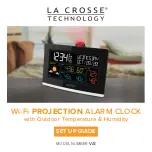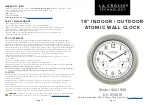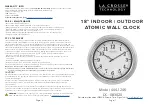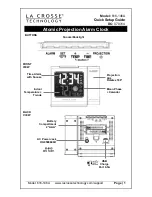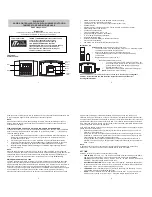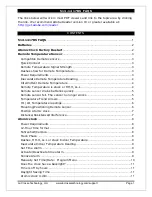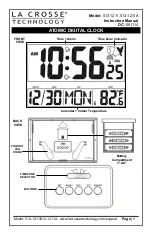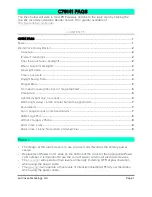
High Voltage Circuit:
Parts List:
C5
22pF
C6
22pF
C1
2.2uF 450V
C7
100nF
C8
100nF
D2
UF4004
S28
SOCKET 28
Q2
16MHz
L1
100uH
R7
2.7k
Q1
IRF740
R9
390k
R10
4.7k
R18
10k
IC2
MEGA8-P
The high voltage circuit uses the micro-controller to drive the boost circuit with a high frequency square
wave, and has a feedback loop in which the controller reads the voltage produced via an analogue input,
and regulates the brightness of the tubes so that there is no flickering or unwanted dimming.
Notes:
•
See the section on “Component Identification” for help with identifying the components.
•
C4 must go the right way round. The negative side is marked with a stripe (see hint).
•
Put Q1 so that the metal portion lines up with the white stripe on the board. The metal side faces
to the outside of the board.
•
D2 should be placed so that the white stripe on the body lines up with the white stripe on the
board.
•
Put the micro-controller socket in first. Make sure that the depression on the end of the socket
lines up with the marking on the board. When you put the chip in, the chip should go in with the
depression faces to the outside of the board.
Once all the components are on the board, hook up the power. Give your work a careful check to make
sure that the orientation of the components is right. Especially check that the stripe on C1 is facing the top
of the board (not near the 170V test point).
Test Step
Apply power to the board again. Listen for any stressed sounding buzzing or humming,
and check that neither the 7805 nor the IRF740 get excessively hot.
Check that the power LED still lights.
Содержание nixie v41
Страница 1: ...Arduino Nixie Clock v41 Operating Instructions Construction Manual Document V0041a...
Страница 12: ...Schematic Below is the schematic for the clock...
Страница 16: ...At the end of the low voltage circuit build your board should look like this Low Voltage Circuit...
Страница 19: ...At the end of the high voltage circuit build your board should look like this High Voltage Circuit...
































